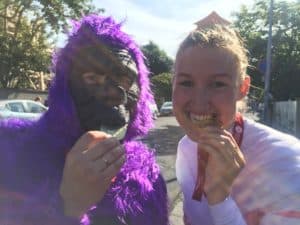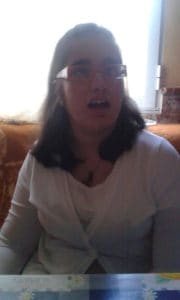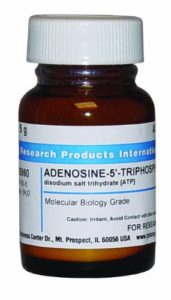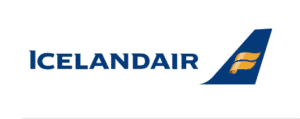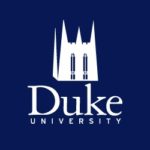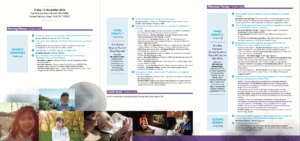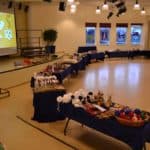Myndband sem útskýrir AHC
Fríða og Dýrið hlaupa fyrir Sunnu sætu
Fríða og Dýrið munu hlaupa 10km í Reykjavíkurmaraþoninu til styrktar AHC samtökunum.
Erna Katrín og Sigurður Hólmar taka að sér hlutverkin.
Reykjavíkurmaraþon 2016
Allt er gott sem endar vel.
Fríða og Dýrið sættust eftir 10km og urðu bestu vinir 3>
Köttur úti í mýri úti er ævintýri.
AHC samtökin þakka innilega öllum þeim sem hlupu fyrir okkur þetta árið sem voru hvorki fleiri næ færri en 52 hlauparar.
Við þökkum ekki síst þeim sem hétu á hlauparana okkar og styrktu þannig baráttuna til að finna lækningu við flóknast taugasjúkdómi í heimi.
Yndislegur dagur að baki og nú er bara að sjá hvað gerist á næsta ári….
5th ATP1A3 symposium in London

UCL Institute of Neurology, Queen Square 33, London, United Kingdom
24th-26th August 2016
PROGRAM
Wednesday, 24th August, 2016
19.00 P.M. – 22.00 P.M. Welcome to London
The Holiday Inn Bloomsbury, 1st Floor Reception Area
Time Agenda
19:00-21:30 Registration & Buffet
19:45 Welcome Speech – AHCUK
19:50 Opening Message – Sanjay Sisodiya, Chair 5th Symposium
20:00 Victoria A. Platt – Secretary AHC Foundation, USA
A presentation of the topics and discussions raised at the July 2016 AHCF Family Meeting in Indianapolis, Indiana, USA
20:15 Sigurdur Holmar Jóhannesson – President, AHC Federation of Europe. AHC today and in the future.
20:30-22:00 Interaction and discussions with AHC Family Associations
Thursday, 25 August 2016
Morning session: Clinical developments in ATP1A3-related disease
Chairs: Helen Cross, GOSH, London &Mohamad Mikati, Duke, USA
09:00 Allison Brashear,
Wake Forest School of Medicine, USA
&
Kathleen Sweadner,
Massachusetts General Hospital and Harvard Medical School, USA
Plenary Introduction: Where we are in ATP1A3-related disease today?
09:45 Diane Doummar, Hospital Armand Trousseau, Paris, France Encephalopathies associated with ATP1A3 mutation
10:00 Hendrik Rosewich,
Medical University Göttingen, Germany CAPOS
10:15 Madeleine Scharf,
Inst. of Experimental Immunology, Lübeck, Germany Neuronal Na+/K+ ATPase as an autoantibody target in paraneoplastic neurologic syndrome
10.30 Coffee Break
11:00 What are the clinical events in ATP1A3-related disease?
Chairs: Hendrik Rosewich, Medical University Göttingen, Germany and Sanjay Sisodiya, UCL, London
A video and clinical panel session to discuss events that are seizures confirmed on EEG recording, those that are hemiplegic episodes and that are undiagnosed.
• Facilitators:
murine experts (Steve Clapcote, Leeds, UK; Karin Lykke-Hartmann, Aarhus University, Denmark, Mohamad Mikati, Duke, USA), human epilepsy (Mohamad Mikati, Duke, USA; Helen Cross, GOSH, London; Beate Diehl, UCLH, UK; Alexis Arzimanoglou, Lyon, France), human movement disorders (Kailash Bhatia, UCL and Lucinda Carr, GOSH, London).
• Intended outcome:
consensus definitions of events in AHC, key for therapy trials.
12:30
Lunch and Poster Session
Foyer of the UCL Institute of Neurology
Afternoon session Research developments in ATP1A3-related disease
Chairs: Erin Heinzen, Columbia University, USA and Steve Clapcote, Leeds University, UK
14:30 Arn van den Maagdenberg, LUMC
The Netherlands AHC Gene 2 – an update
14:50 Jennifer Kearney,
Northwestern University, USA Genetic modifiers for ATP1A3
15:10 Karin Lykke-Hartmann , Aarhus University, Denmark Further analysis of the Atp1a3 D801Y knock-in mouse model
15:30 Bente Vilsen
Aarhus University,
Denmark ATP1A3 neurological disease mutations affecting Na+-site III: Structural and functional perspectives and rescue of compromised function
15:50 Discussion
16.00 Coffee Break
16.30 Hugh Piggins, The University of Manchester, UK Circadian Disruption in the Myshkin Mouse Model of Mania Independent of Deficits in Molecular Clock Function
16:50 Minako Hoshi, Kyoto University, Japan ATP1A3 as target of beta-amyloid assembly
17.10 Ronald Melki, CNRS Paris, France α-synuclein interaction with α3-Na+/K+-ATPase and relation to decline?
17.30 Jan Koenderink, Radboud UMC,
The Netherlands Biochemical and electrophysiological analysis of ATP1A3 mutations
17:50 Discussion
18:00 End of Day 1 Program
19.00 Conference Dinner and Election of Standing Committee for the ATP1A3 disease Symposium
Holiday Inn London Bloomsbury, Turner Suite
Friday, 26 August 2016
Morning session: Translation to Treatments in ATP1A3-related disease
Chairs Sanjay Sisodiya, UCL, UK and Tsveta Schyns, ENRAH, Belgium
09:00 Francesco Muntoni,
GOSH, London, UK Plenary Introduction:
Gene therapy in a neurological disease, the journey: Duchenne Muscular Dystrophy
09:45 Natalya Fedosova, Aarhus University, Denmark On the way to isoform – specific drugs
10:00 Steve Clapcote, Leeds University, UK Update on the Myshkin mouse model of AHC
10:15 Emmanuel Roze, Paris, France Sharing the experience of a clinical trial in alternating hemiplegia
10:30 Coffee break
11:00 Helen Cross, GOSH London, UK The role of dietary therapy in AHC
11:15 Elisa de Grandis, University of Genoa, Italy Flunarazine and AEDs – where are we now?
11:45 Juan Kaski, GOSH, London, UK Cardiac involvement in AHC: treatment beyond the brain?
12:15 Poster Bursary Award Winner
Christine Simmons,
Northwestern University, USA AHC Patient-specific iPSC-derived Neurons Exhibit Depolarized Resting Membrane Potential and Altered Excitability
CONCLUSIONS, LUNCH AND END OF MEETING
Sandra Vela 29 ára AHC hetja fellur frá
Tónleikar til styrktar AHC samtökunum
Miðvikudagskvöldið 14. september næstkomandi mun tónleikaröðin „Frjáls eins og fuglinn“ hefja veturinn með tónleikum Arnhildar Valgarðsdóttur píanóleikara og Særúnar Harðardóttur sópran.
Tónleikarnir hefjast kl 20:00 og standa í 50 mínútur.
Þær stöllur verða sannarlega frjálsar eins og fuglinn í lagavali þar sem þær feta frá klassík yfir í dægurlög. Þær þræða sig í gegnum perlur eftir Emil Thoroddsen, Sigfús Halldórsson, Oddgeir Kristjánsson, Friðrik Jónsson og Megas og koma við í söngleikjunum Mary Poppins og My fair lady svo eitthvað sé nefnt.
Aðgangseyrir er 2.500kr en 1.500kr fyrir öryrkja og eldri borgara.
Ágóði tónleikana rennur til Sunnu Valdísar og AHC samtakana
Enginn posi er við inngang.
Kaffi og konfekt verður í lok tónleika
Alþjóðlega myndbandasíða AHC samtakana
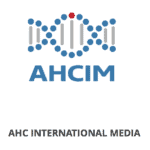
AHC samtökin á Íslandi hafa unnið í því eftir gerð heimildarmyndarinnar Human Timebombs að setja upp myndbandasíðu þar sem hægt er að finna ógrynni af upplýsingum um AHC og tengda sjúkdóma í formi myndbanda.
www.ahcim.com

Hægt er að ýta á leitarorð til þess að finna það sem þú sækist eftir eða kíkja í þann flokk sem þú hefur helst áhuga á að skoða.
Myndböndin eru í nokkrum flokkum:
Myndbönd frá AHC samtökum
Heimildarmyndir
Heima myndbönd
Viðtöl
Fréttir
Kynningar
Við höfum nýlega bætt við 13 viðtölum sem við tókum á vísindaráðstefnu í London í ágúst þar sem foreldrar og vísindamenn segja okkur hvernig staðan er á rannsóknum í dag og hvernig við ætlum að vinna í nánustu framtíð til að komast nær því að finna lækningu við AHC
Þessi síða mun nýtast einstaklega vel fyrir foreldra, lækna og rannsakendur bæði núna og í framtíðinni.
Við munum halda áfram að bæta við myndböndum á síðuna og taka viðtöl við þá sem koma að AHC og skyldum sjúkdómum.
AHC samtökin óska eftir styrkjum til þess að halda þessu verkefni gangandi
frekari upplýsingar á ahc@ahc.is
Treatment with Oral ATP decreases alternating hemiplegia of childhood with de novo ATP1A3 Mutation
Orphanet Journal of Rare Diseases201611:55
Received: 21 September 2015 Accepted: 25 April 2016 Published: 4 May 2016
Background
Alternating hemiplegia of childhood is an intractable neurological disorder characterized by recurrent episodes of alternating hemiplegia accompanied by other paroxysmal symptoms. Recent research has identified mutations in the ATP1A3 gene as the underlying cause. Adenosine-5′-triphosphate has a vasodilatory effect, can enhance muscle strength and physical performance, and was hypothesized to improve the symptoms of paroxysmal hemiplegia.
Methods
A 7-year-old boy with alternating hemiplegia of childhood who was positive for a de novo ATP1A3 mutation was treated with adenosine- 5′- triphosphate supplementation orally as an innovative therapy for 2 years. Outcome was evaluated through the follow-up of improvement of hemiplegic episodes and psychomotor development. Side effects and safety were monitored in regularity.
Results
With the dosage of adenosine-5′-triphosphate administration increased, the patient showed significantly less frequency and shorter duration of hemiplegic episodes. Treatment with adenosine-5′-triphosphate was correlated with a marked amelioration of alternating hemiplegia of childhood episodes, and psychomotor development has improved. The maximum dose of oral administration of adenosine-5′-triphosphate reached 25 mg/kg per day. Adenosine-5′-triphosphate therapy was well tolerated without complaint of discomfort and side effects.
Conclusions
The 2-year follow-up outcome of adenosine-5′-triphosphate therapy for alternating hemiplegia of childhood was successful.
http://ojrd.biomedcentral.com/articles/10.1186/s13023-016-0438-7
Report from 5th ATP1A3 Meeting London UK August 25-26th 2016
Report from 5th ATP1A3 Meeting London UK August 25-26th 2016
The Fifth Symposium on ATP1A3 in Disease was held in London UK August 25-26th 2016. The conference was very successful with lots of exciting results and sense of increasing teamwork and collegiality with groups throughout the world.
The opening talk on Day 1 was given by Dr. Brashear who provided a clinical review of typical and atypical ATP1A3-associated disorders. Presented brain MRI data from RDP patients, looking at cerebellum, basal ganglia, and thalamus volume along with performance during card sorting tasks. Dr. Sweadner then reviewed mouse models representing different genetic disorders of Na, K-ATPases with an emphasis on potential disease mechanisms. She also discussed the spectrum of known mutations in ATP1A2 and ATP1A3 with an emphasis on what can be learned by comparing the locations of these mutations between the two genes.
Drs. Doummar, Rosewich, Bhatia and Scharf reported on unique features of ATP1A3-associated diseases. ATP1A3 can cause an early onset epileptic encephalopathy without hemiplegic attacks. There are now 22 known cases of CAPOS syndrome and they all have the same ATP1A3 mutation (E818K). A potential new mechanism to explain optic atrophy in this disorder was discussed. A case with painful dyskinesia and dystonia was presented. Finally, there was evidence discussed that ATP1A3 can be the target of an autoimmune disorder in adults that is associated with cancer. Dr. Caski discussed cardiac involvement in AHC emphasizing his 2015 publication reporting ECG abnormalities.
A video review session was led by Dr. Mikati to seek consensus for describing movements and seizure manifestations of ATP1A3 disorders. There was specific discussion of spells of altered consciousness in AHC that are not accompanied by abnormal EEG findings. A comment about the similarity of clinical presentations to anti-NMDA encephalitis led to a stimulating discussion about testing ATP1A3 mutation-negative kids for anti-NMDA and anti-alpha3 antibodies. There was consensus to generate a video library for review by experts in the field.
Two presentations focused on different aspects of genetics related to AHC. Dr. van den Maagdenberg gave an informative update on the search for a possible second AHC gene. In ATP1A3 mutation negative patients, further sequencing identified a few patients with ATP1A3 mutations (false-negative initial sequencing). In other families, new gene variants were discovered but further validation is needed. Dr. Kearney reviewed related work in Dravet Syndrome using mouse models to discover genetic modifiers. A similar strategy using ATP1A3 mouse models is feasible to discover genetic pathways and disease modifying therapies.
Mouse models continue to provide novel information about ATP1A3-related disorders. Dr. Lykke-Hartmann provided an update on the ATP1A3 D801Y mouse model. She focused her presentation on abnormal gait and balance evident in the mice and the corresponding defects in cerebellar neuron function. Dr. Piggins presented data on the Myshkin mouse (mutation ATP1A3-I810N) focusing on circadian rhythms. These animals are hyperactive with poor circadian control and quicker adaptation to alterations in day-night changes (e.g., they “don’t have jet lag”). A discussion ensued about whether patients with AHC also have day/night issues. Dr. Clapcote discussed other published work on the Myshkin mouse.
Two presentations focused attention on other proteins that may interact with ATP1A3. Dr. Hoshi presented data that ATP1A3 interacts with amyloid beta protein and discussed possible involvement of the protein in Alzheimer’s disease. Dr. Melki presented other data reporting interactions between ATP1A3 and a protein (α-synuclein) involved in Parkinson disease.
There were presentations focusing on the structure and function of ATP1A3. Dr. Vilson reviewed structural and functional aspects of Na,K-ATPases focusing on perturbation to sodium ion binding. Dr. Koenderink discussed his research findings from work that was supported in part by AHCF. He illustrated different molecular mechanisms that stem from ATP1A3 mutations. There does not appear to be a clear correlation of pump function within phenotype or severity. Dr. George outlined AHCF funded work being done at Vanderbilt and Northwestern using patient-specific induced pluripotent stem cells made into neurons. Functional data on these neurons were presented.
The keynote presentation of Day 2 was given by Dr. Muntoni. He shared decades of experience of mechanistic discovery and therapeutic search in Duchenne Muscular Dystrophy. The difficult and often prolonged journey from gene discovery to effective therapy was stressed, as lessons learned may apply to ATP1A3 related disease manifestations.
Additional presentations discussed different treatment strategies. Dr. Fedosova discussed the binding of cardiotonic steroids to Na, K-ATPases and speculated that it may be feasible to develop ATP1A3-selective drugs. Dr. Cross discussed the use of a ketogenic diet in AHC. Dr. de Grandis reviewed studies on flunarizine and antiepileptic drugs for AHC. Several studies have been done but all had small numbers of subjects and suboptimal experimental designs. Finally, Dr. Roze reviewed his on-going clinical trial experience in AHC involving 10 patients. His clinical trial explores the use of the fatty acid analog triheptanoin based on a hypothesis of altered energy usage in the brain underlying AHC. Findings from this clinical trial may be revealed by the end of 2016.
The 6th Symposium on ATP1A3 in Disease will be held 21-22 September 2017 in Tachikawa City Tokyo, Japan. The Steering Committee for the 2017 meeting will consist of Drs. Ess, Mikati, Rosewich and Schyns, and Mr. Wuchich.
Tákn með tali
Skemmtileg vinnustund hjá Sunnu Valdísi og Sigrúnu Grendal
Viðtal við Sigrúnu Grendal
Ný viðtöl á AHC International Media
Við vorum að skella inn nýjum viðtölum á AHCIM síðuna okkar.
Viðtölin voru tekin á vísindaráðstefnu um genið ATP1A3 í London.
HÉRNA er hægt að skoða viðtölin
Viðtal við prófessor Brian Neville
Virkilega gott viðtal við prófessor Brian Neville sem vinnur við barnaspítalann í London á Great Ormond Street og er einn af þeim fyrstu í heiminum sem uppgötvaði AHC. Brian hefur unnið með AHC síðan um 1980 en hefur nýlega hætt störfum.
Við tókum viðtalið í Lunteren, Hollandi árið 2014.
Rare disease Report: The making of Human Timebombs
The making of Human Timebombs
My name is Sigurdur Holmar Johannesson, I am father to a 10 year old girl, Sunna Valdis, who is diagnosed with Alternating Hemiplegia of Childhood (AHC).
I work as an air traffic controller and my wife works as a flight attendant. We live in Reykjavik, Iceland, and are blessed with two children, Viktor is 17 and Sunna is 10.
Viktor is a perfectly healthy young man, athletic, gets good grades and has a bright future ahead of him.
Sunna is amazingly happy but her condition is extremely debilitating. She has terrible episodes almost every day, sometimes life threatening episodes.
Our family formed the AHC Association of Iceland in 2009 and my wife and I have been raising awareness for AHC and rare disorders both domestic and internationally ever since.
Alternating Hemiplegia of Childhood, which is the most complex neurological disorder known to man, has the prevalence of 1/1.000.000.
AHC incorporates all the symptoms of all other neurological diseases and more.
AHC causes episodes of spasms, paralysis, seizures, and excruciating pain. AHC patients are also cognitively late developed and many are touched with ADHD and autism.
AHC has so many different elements and the symptoms are always changing so it is very difficult to explain to another person what goes on in our home every day.
In 2012 when Sunna was 6 years old we decided that in order to explain our situation we had to make a short film about Sunna and her condition in Icelandic and English so family, friends and doctors understood her condition and the complexity of it.
We were lucky enough to meet Agusta Fanney who was at that time studying filmmaking in California and she made the video for us
We uploaded the video´s to Youtube but expected nothing. What happened was nothing short of fantastic because we started to get messages saying that children where getting diagnosed because to the video and that other families where getting more understanding from their family and friends, all because if this video.
This positive response made us want to help more. Agusta Fanney had at this time gotten to know Sunna so now it was personal for her, she was now passionate about helping the cause and to expedite research for AHC.
I also got very interested in making films because I saw the effect it was having and realized that the phrase “a picture says more than a thousand words” was indeed very true. Finding funds to raise awareness and support research was also easier when people understood the disease.
We then made an international short video with the help of AHC families from both sides of the Atlantic. That video also got great response and helped many families all over the world.
At that time we decided to make a longer video 10-15 minutes that would explain the disease in more detail and started to work on it and to get funding for the film. The funding proved to be quite difficult but in the end it somehow came together but a lot of people either volunteered their work or gave a huge discount. When the project was rolling and we saw that the information we had would possibly be life changing to hundred or even thousands of families and we decided that we would not settle for anything less than a professional grade documentary that would be at least 35 minutes. The film´s potential also rose when internationally renowned artists like Ólafur Arnalds and Of Monsters and Men offered their music to the film. Our multitalented graphic designer Sigurgeir Arinbjarnarson also surprised us by composing two songs that were needed to escalate the feelings of emotional scenes. Iceland´s best-known actor Ólafur Darri Ólafsson volunteered to narrate a part of the film. Ólafur Darri is a personal friend of the family and has helped us immensely throughout the years.
The making of Human Timebombs was a true roller-coaster ride, a lot of sleepless nights and 2.5 years of work. By the end of filming in the US and Europe and collecting video´s from families all over the globe we had about 70 interviews and 50 hours of material to work with. To cut the film down to a 35-minute documentary that captured everything we needed to convey was many months of work and a lot of very good film ended up on the director’s floor. We realized this was a waste of precious information so we founded the AHC International Media and opened the website www.ahcim.com where everything we filmed will be open to the public and also we will continue to produce interviews that are of interest to AHC and related diseases.
Human Timebombs was finished in August 2015 but the name of the documentary arrives from the fact that AHC kids can have an episode or a seizure at any given moment without warning and are therefore sometimes referred to by some parents as ticking timebombs.
We made a 5 minute version of Human Timebombs that was sent to a short film festival hosted by the Annual Academy of Neurologist in Vancouver this year and it won the First prize and also the Fan Favorite prize. Agusta Fanney also received an award for Human Timebombs at the Accolade Global Film Competition last year in the category of woman filmmakers.
The film was first aired in public television in June this year by the Icelandic National Broadcasting Service and will be available in Icelandair´s onboard entertainment system from November 1st. Human Timebombs has been translated to10 languages so far.
Human Timebombs has been distributed as a teaching tool to many hospitals in Europe and the US. Hospitals such as Duke University hospital, Vanderbilt, University hospital of Utah, Northwestern, Nemours Children hospital in Orlando, Massachusetts General Hospital and more. We intend to continue to distribute the film to teaching hospitals, if you are interested in receiving a copy for your hospital please contact ahc@ahc.is
AHC is still not known by majority of neurologists in the world and only a very small percentage if the general public is familiar with rare diseases in general and only a fraction of them know AHC so it´s fair to say that the disease needs a voice and we hope that Human Timebombs will be that voice. We would also like to help researchers and the public to realize that by finding a treatment for AHC we could very possibly find a treatment for other much more common diseases and help millions of people all over the world improve their quality of life.
If you would like to donate or to help the cause please contact your nearest AHC association www.ahcia.org
The article from Rare Disease Report
Links:
https://www.youtube.com/watch?v=aMzG0IDKRyg
https://www.youtube.com/watch?v=FxCryStG2n0
https://www.youtube.com/watch?v=se6i5tD4uow
https://www.youtube.com/watch?v=jmdgsfddZKA
http://www.raredr.com/news/the-making-of-human-timebombs
The global gathering for rare diseases
Epilepsy Society says farewell to champion of children with epilepsy Brian Neville
Renowned neurological expert emeritus professor Brian Neville has died peacefully in his sleep at the age of 77, after a long-term illness.
Professor Neville was a pioneer in paediatric neurology and was committed to finding the causes of epilepsy in childhood, striving for early detection and treatment.
He was instrumental in the launching buccal midazolam, an emergency treatment for continuing seizures, and was the inaugural Prince of Wales’s Chair of Childhood Epilepsy at UCL Institute of Child Health at Great Ormond Street in 2004. He also initiated a brain surgery programme for childhood epilepsy in 1990.
The Neville Childhood Epilepsy Centre at Young Epilepsy in Lingfield, Surrey, was named after Professor Neville.
Man of vision
Professor Ley Sander, medical director at Epilepsy Society, said: ‘The world of epilepsy owes much to Brian. He was a man of vision who not only understood the impact that epilepsy can have on young children, but dedicated his life to improving diagnosis and treatments for them.
‘He worked tirelessly with physicians, social workers, teachers and, of course, the children themselves to optimise seizure control and minimise the disruption that epilepsy can cause in the brain of developing children. His epilepsy surgery programme has been life changing for many young people.’
Carol Long, chief executive at Young Epilepsy, said, ‘Young Epilepsy would not be the organisation it is now if it hadn’t been for Brian’s vision in recognising the need for a progressive approach to supporting children and young people with epilepsy. We’re indebted to him and his legacy will continue to be apparent for generations to come.’
Transforming lives
Chief executive at Epilepsy Society, Clare Pelham said: ‘Brian Neville was an inspiration. His pioneering work has done much to transform the lives of young people with epilepsy and their families. Our thoughts are with his family and friends at this very sad time, and also with our friends at Young Epilepsy.’
Professor Brian Neville was one of the first doctors to work with AHC families in the UK and all over the world.
Flataskóli styrkir AHC Samtökin
Jólamarkaður Flataskóla var haldinn í morgun á munum nemendum sem þeir höfðu búið til á jólaþemadögunum 7. og 8. desember s.l. Allmargir lögðu leið sína til okkar í morgun til að hjálpa okkur að styrkja gott málefni.
Nemendur í sjöunda bekk sáu um alla afgreiðslu og auk þess var boðið upp á kaffi og smákökur. Upphæðin sem safnaðist var tæplega 350 þúsund krónur og fer hún að þessu sinni til styrktar AHC samtökunum á Íslandi. AHC er flókinn taugasjúkdómur, frekar sjaldgæfur en ein stúlka hefur greinst með hann á Íslandi.
Tilgangur samtakanna hér á landi er að fræða almenning og heilbrigðisstarfsfólk um sjúkdóminn AHC (Alternating Hemiplegia of Childhood) og styrkja rannsóknir á honum.
Sue Freckington supports AHC
Sue Frecklington from Skellingthorpe, Lincolnshire,England, supported the AHC Association of Iceland by 450 GBP today.

Sue has been raising sponsorship for AHC association of Iceland this year through her 516 challenge. She decided to run or bicycle 10 miles a week all year and have people in the community sponsor her initiative.
We thank her from the bottom of our hearts
Ósk um gleðileg Jól
Looking back at 2016…..
Looking back at 2016……
Looking back at 2016 I can honestly say it was a very busy year for AHC.
A couple of years ago I took together all the fundraising events around the world at the end of the year and I could easilly keep track of them all because they were not too many. This year there is no way I can do this because so many people are raising funds and so many events are ongoing.
This is of course wonderful to see and should result in more funding towards basic research on AHC which again takes us closed to our goal to find a treatment for this rare and complex disease.
Are we closer to our goal than we were this time last year?
The short answer is YES but perhaps not as close as we would have hoped for. Research was delayed because the labs all had the same problem. The mutated mice were not able to breed and they were dying prematurely which just shows us how complex and serious this gene mutation is. The labs seem to have overcome this obsticle and now have enough mice to start experimenting with potential molicules.
This is where things get interesting for the families because if the reserachers find a possible molicule that works with the mice then the families will have to participate in a drug trial soon. If the trial is successful then we might have a treatment option in a few years.
So where are we in regards to timeframe?
I would say the most positive outcome if there is already a molicule available that would work to restore the function of the sodium/potassium pump is that we could have a drug for AHC within 3-4 years.
If there is no available molicule and we have to create a new one then we would be talking about a timeframe of 10-15 years before we have a drug on the marked, this is given we get enough funding to produce it.
What is going on in 2017?
Its exciting to reveal that on International AHC day 18th of January 2017 we will launch a new website dedicated to the documentary Human Timebombs
The full film will be available in 10 languages on the site www.humantimebombs.com
We are going to need YOUR help in making to announcement heard all over the world and to do that we created a Thunderclap which we hope you can participate in and become a SUPPORTER. For more information click this link http://thndr.me/i14sej
It is our hope that by making Human Timebombs public the film will help families all over the world to get more understanding from people in their community. We also hope that more children will get diagnosis because of the film and that we get more doctors and reserachers interested in helping the AHC community find a treatment for this important disorder.
I wish you a happy new year
Sigurdur Holmar Johannesson
Alþjóðlegur AHC dagur 18. janúar 2017
Í dag er alþjóðlegur AHC dagur haldin hátíðlegur um allan heim. Alternating Hemiplegia of Childhood (AHC) er afar sjaldgæfur taugasjúkdómur sem fyrst var skrifað um árið 1971 af Verret & Steele.
Árið 1993 var aðeins vitað um 30 tilfelli af AHC í heiminum en í dag hafa greinst um 850 tilfelli og sú tala vex hratt.
Þann 18 janúar árið 2012 fundu vísindamenn í Duke Háskólanum stökkbreytta genið, ATP1A3, sem veldur sjúkdómnum og eftir þá uppgötvun varð auðveldara að greina AHC sjúklinga.

AHC er talinn vera flóknasti taugasjúkdómur sem vitað er um og er þess vegna mjög merkilegur sjúkdómur til þess að rannsaka vegna þess að þeir sem hafa sjúkdóminn eru með einkenni allra annara taugasjúkdóma. Af þessum orsökum eru miklar líkur á því að rannsóknir á AHC muni hjálpa til við að finna lausn á mörgum öðrum algengari sjúkdómum eins og til dæmis Parkinsons.
Það sem heldur aftur af rannsóknum er skortur á fjármagni en lyfjafyrirtæki hafa ekki viljað taka þátt í rannsóknum hingað til vegna þess að markhópur á lyfi fyrir AHC er fámennur og ólíklegt að lyfið muni skila hagnaði.
Í grunninn veldur AHC lömunarköstum sem geta varað frá mínútum uppí vikur. Flestir AHC sjúklingar þjást líka af Dystonia krampaköstum í útlimum auk þess að vera þroskaskertir, á einhverfurófi, með athyglisbrest, með nystagmus (ósjálfráðar aughreyfingar), eiga erfitt með samhæfingu, gang og fínhreyfingar og auk þess eru um 70% AHC sjúklinga einnig greindir með flogaveiki.
Eins og sést á þessari upptalningu þurfa AHC sjúklinga stöðuga umönnun. Köstin eru framkölluð af ýmiskonar áreiti svo sem hávaða, hitabreytingum, snertingu við vatn og ýmislegu öðru.
Í tilefni alþjóðlega AHC dagsins opna AHC Samtökin á Íslandi nýja heimasíðu www.humantimebombs.com þar sem hægt er að sjá heimildarmyndina Human Timebombs eða Mennskar Tímasprengjur í fullri lengd og á 10 tungumálum.

Human Timebombs er heimildarmynd eftir Ágústu Fanney Snorradóttir og var hún frumsýnd á RUV í júni 2016. Myndin hefur verið sýnd víða um heim og hefur henni allsstaðar verið gríðarlega vel tekið. Heimildarmyndin útskýrir AHC á einfaldan hátt og eru viðtöl við foreldra og sérfræðinga um AHC. Ég hvet þig til þess að horfa á myndina og styðja við AHC hetjurnar okkar.
Sigurður Hólmar Jóhannesson
Formaður AHC samtakana á Íslandi
Forseti AHC sambands Evrópu
